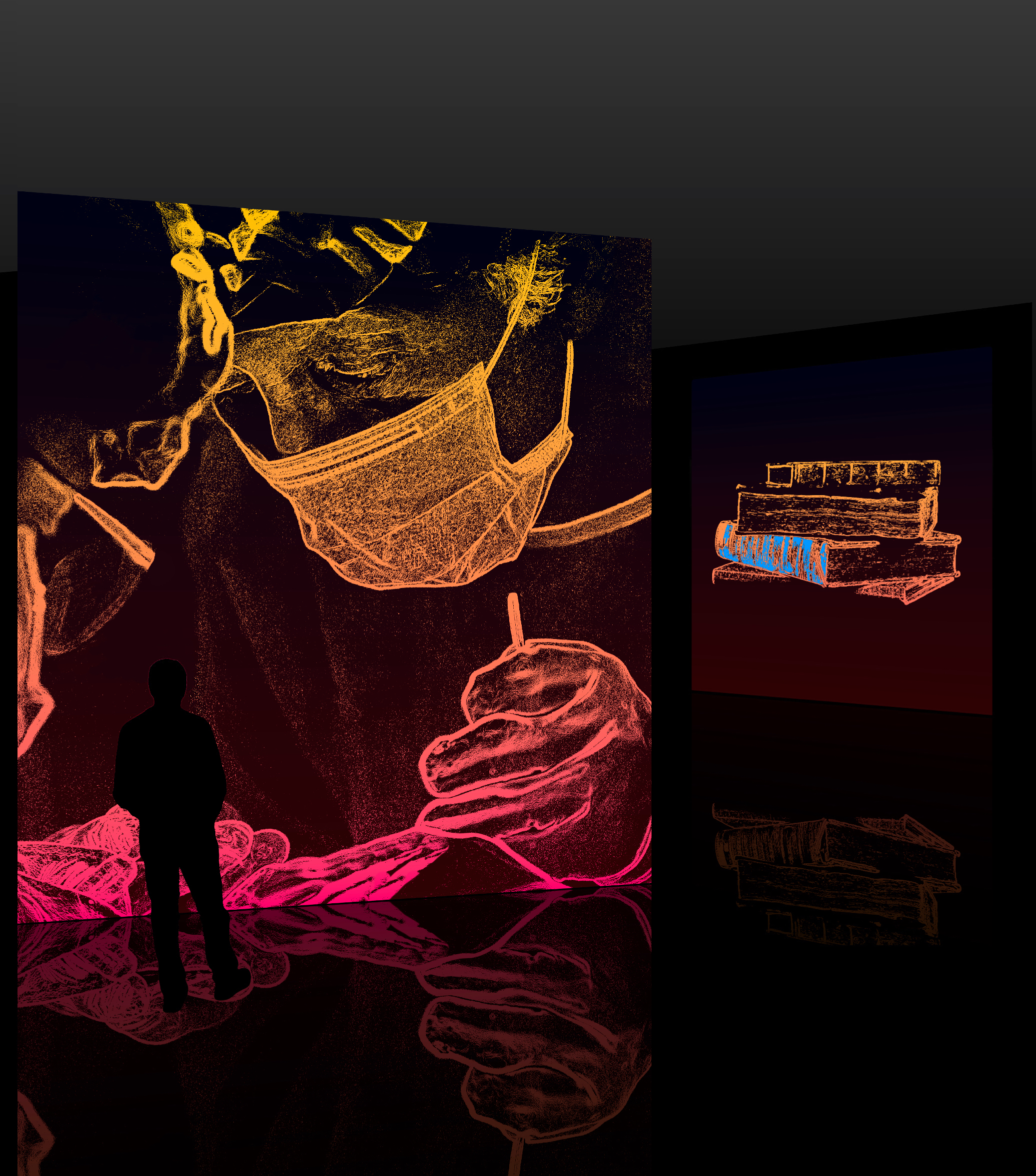Abstract
Artificial intelligence (AI) is now integrated into a variety of fields, including medicine. AI applications raise numerous ethical questions, particularly about quality of care and patient-clinician relationships. This article accompanies 2 digital photo-paintings that address these ideas narratively and visually, with special emphasis on communication, compassion, and competence.
Three C’s
Excellence is widely regarded as an attribute of good health care quality, often defined in terms of communication, compassion, and competence.1 Restricted time is an obstacle to acquiring and mastering these 3 C’s if health care delivery systems focus too narrowly on volume and ignore patients’ and clinicians’ needs for compassion.2
AI Power
Artificial Intelligence (AI) is currently being adopted in many sectors, including health care. The power of AI technologies is evident in innovations in processing huge amounts of data, deep-learning algorithms, and expansion of machine learning capacity to learn in less time than it takes a human being.3 AI applications in health care include faster and often more accurate diagnosis through image recognition, pathology detection, and diagnostic assessment.3
Quality Care and Patient-Clinician Relationships
Ethical questions have been raised about AI’s capacity to undermine or extinguish compassion and human connection in health care.4 If properly implemented in caregiving, however, AI could nurture excellence and motivate organizational cultures in which the 3 C’s could be practiced and cultivated with rigor, diligence, and care. For example, while an AI application is executing tasks, clinicians might be able to spend time communicating with patients, expressing compassion, and delivering care with competence and satisfaction.2,3 Incorporating AI-based decision aids could also boost clinicians’ confidence in care management decisions.3
Representing the 3 C’s Visually
The first image invites a viewer to consider communication and compassion as features of everyday patient-clinician encounters. These skills are displayed on screens suggestive of AI in the form of a digitized symbol of traditional professional caregiving—a stethoscope—and in the form of a digitized pair of holding hands, a traditional symbol of solidarity and care.
Figure 1. Communication and Compassion

Media
Digital photo-painting.
In the foreground of the image, the woman—perhaps a patient or a clinician—might regard this larger-than-life stethoscope as a means of emphasizing listening as a key to good communication in any relationship. The blue upper surface of the stethoscope’s bell and diaphragm suggests how listening can be healing in the same way that water quenches thirst.
A second image portrays competence in 2 forms: experience, represented as gained in surgical practice; and knowledge, represented in books.
Figure 2. Competence: Experience and Knowledge

Media
Digital photo-painting.
In the foreground of this image, a man regards a larger-than-life surgery in progress. This surgeon’s upper eyelids and nose bridge suggest years of accumulated experience and knowledge put into the service of patients. At the right of the image, a book’s blue spine suggests this time that, as water quenches a clinician’s thirst for knowledge, it flows later to patients during clinical encounters.
References
- Allen-Duck A, Robinson JC, Stewart MW. Healthcare quality: a concept analysis. Nurs Forum. 2017;52(4):377-386.
- Snyderman R, Gyatso T the 14th Dalai Lama. Compassion and health care: a discussion with the Dalai Lama. Acad Med. 2019;94(8):1068-1070.
- Mintz Y, Brodie R. Introduction to artificial intelligence in medicine. Minim Invasive Ther Allied Technol. 2019;28(2):73-81.
-
Tran BX, Vu GT, Ha GH, et al. Global evolution of research in artificial intelligence in health and medicine: a bibliometric study. J Clin Med. 2019;8(3):360.



